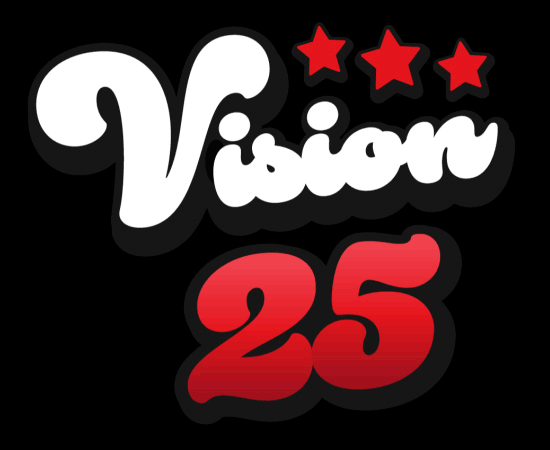IT Documentation: Do it for Your Techs!
Documentation isn’t boring. That’s right, you heard it here first. It isn’t merely ‘paperwork.’ Nor is it an inconvenience or a necessary evil, something that MSPs have to ‘put up with.’ At least, it doesn’t have to be. Not if you look at it from the right angle.
In essence, documentation is writing things down. And, in the business world, it is an expression of and means to greater operational maturity. In other words, robust documentation practices not only reflect, but reinforce mature business practices.
And just what might those be? That one’s easy—mature business practices are the kind that make your MSP money! However you feel about documentation, the fact remains: An effective documentation management strategy can save your MSP tons of time and money.
In this, the first of a series of blog posts devoted to documentation, we will consider how documentation makes your technicians’ work lives easier and more productive. But before we dive into that topic, a few general remarks on what makes documentation such a powerful business tool …
Documentation is Paying Attention
Documentation facilitates an honesty that comes only from truly paying attention. When your IT business’s SOPs exist mostly in your head (and perhaps the heads of your more experienced techs), they can seem a lot more efficient and effective than they really are. But writing them down, and then, reading what you’ve written … well, that entire process has a way of clearing away the fog of ego and revealing the truth—the good, the bad, and the ugly. Documenting your business means really looking at it.
Getting Your Technicians on Board
MSP owners face a distinct challenge when it comes to implementing more and better documentation protocols at their companies. Technicians aren’t, generally speaking, huge fans of documentation. So, pushing a pro-documentation agenda can make you look like the ‘bad guy.’ This is a serious issue, because no matter how slick and elegant your documentation protocols are, without your technicians’ buy-in, they’re just a bunch of rules.
Documentation protocols become documentation practices when the people in your company take them seriously. But how are you supposed to convince your MSP employees that documentation isn’t a bitter pill to swallow, but something to relish?
The solution to the problem of how to instill a documentation culture at your MSP isn’t itself documented. There’s no algorithm you can follow for garnering employee support and enthusiasm. How you go about doing it is largely idiosyncratic. You know your employees and your management style (and if you don’t, this is a wake-up call: get to know yourself ASAP!). Trust your instincts and be the leader you’re comfortable being.
That said, here are two pieces of general advice on how to get your techs to start (and not stop) practicing good documentation hygiene.
1. Be the change …
First piece of advice: be the change you want to see in your MSP. Attitude is contagious. As an MSP owner, what you think and feel about documentation will influence what your employees think and feel about documentation.
“Influence”—not “determine”; you can’t force your technicians to get excited about documentation, but you can do your part to chip away at their biases and their knee-jerk negative reactions. A positive attitude is immeasurably helpful here.
So, consciously foster in your own mind a favorable conception of documentation (e.g., view it as a ‘slick and modern tool capable of driving your MSP’s efficiency through the roof’ or as a ‘thoughtful and detail-oriented business practice that both reflects and reinforces operational maturity’).
2. Don’t force. Motivate …
Second piece of advice: If you frame your documentation conversation in terms of ‘you forcing your techs to do something they don’t want to do,’ you’re shooting yourself in the foot at the beginning of the race—using the starting gun! In business (and in life) forcing people to do things doesn’t work nearly as well as motivating people to do things.
When it comes to implementing a robust documentation culture at your MSP, you don’t want your techs’ obedience; you want their engagement. Without their active, willing involvement, you simply cannot sustain healthy documentation practices.
That’s why some MSPs are turning to gamification to incentivize documentation for technicians. Gamifying documentation makes it fun—well, more fun—and can help you get the ball rolling. But as an MSP owner, you shouldn’t have to rely too heavily on ‘tricks’ like gamification to motivate your techs to follow documentation protocols. That’s because of one simple truth:
Your techs are probably the people in your company who will benefit the most from a mature documentation management strategy. Your job is to convey this to them without hitting them over the head with it. Try working the following points into your conversation …
Why Your Techs Should Love Documentation (or At Least Hate it Less)
When your MSP gets serious about documentation—not only doing it, but doing it the right way—your techs will be able to do their jobs more easily, more efficiently, and just plain better. To be more specific, a solid documentation strategy can help your hardworking technicians …
• Stop having to reinvent the wheel all the time. Without a mature documentation system in place, your MSP’s techs will often have to reinvent the wheel when faced with a new IT issue or customer. Starting from scratch is hard, time-consuming, and prone to human error. But when your techs have a rich service database to consult—clearly written SOPs and detailed ticket notes—they never have to reinvent the wheel to solve a customer’s IT issue. The amount of time this will save your MSP is truly monumental.
• Not have to rely on their fallible brains so much. Written SOPs provide your techs with convenient checklists. Checklists have been used by pilots and surgeons for decades and with great success. The reason is simple: human beings are fallible, and we’re especially fallible when carrying out complex tasks in high pressure situations. So, when you give your techs checklists to carry out their service duties, you’re not implying that their jobs are easy or mechanical; on the contrary, you’re recognizing the inherent difficulty and complexity of their work. Like surgeons and pilots, IT techs ought to offload some cognitive work onto a checklist in order to save their brainpower for the more nuanced aspects of their job—the things that can’t be captured by a list.
• Make customers happy (or less angry, at least). Here’s a scenario: Say a tech goes out to lunch, and a customer whom that tech was helping calls your MSP’s service desk. Here’s what happens when your company has good documentation protocols in place: Another one of your techs can take the call, refer to their colleague’s ticket notes, and pick up right where that colleague left off. This is obviously highly efficient, and it also means that the tech won’t have to ask the customer a bunch of things that their lunch-eating colleague already asked, during the initial call. Why is this important? Because the last thing—the last thing—a frustrated customer wants to do is repeat themselves.
• Spend less time and energy on training new hires. This is a big one. When you hire a new technician, there’s a lot that person needs to learn in order to become a productive member of your company. Without detailed documents that explain how they’re supposed to do their job (internal documentation), the task of training them falls entirely on your more experienced techs. But with such documents, new hires can largely train themselves, leaving your experienced techs more time to tackle the sophisticated IT issues you pay them to deal with. This makes everyone happier, but also, it saves you money—in-person training is costly!
• Avoid awkward stalemates with customers. Sometimes customers are unhappy with the IT service your MSP provided them. Sometimes these customers lodge formal complaints. Sometimes these complaints are … aggressive. When this happens, and there isn’t sufficient documentation of the services received, it’s your word against theirs, your tech’s word against the customer’s. Sure, the customer’s always right—but you don’t want to throw your tech under the bus, or accept fault without knowing what really happened. Dealing with an upset customer is never going to be fun, but documentation gives you something solid to point to when things get testy and turbulent, and it allows for greater overall transparency and accountability in your business culture.
At the end of the day, proper documentation practices are geared towards one thing: making it easier for your techs to access the critical IT info required to carry out their duties. It takes time to build a streamlined, centralized, and comprehensive documentation platform, but the amount of time such a platform saves your MSP in the long run is truly on a different order of magnitude.
IT Glue: Helping You Fight Information Sprawl
Building a productive documentation culture at your MSP is hard work, and it takes time. As your MSP grows, so too does the amount of information flowing through your business. Organizing and managing all that info with proper documentation procedures, and in a way that boosts revenue and improves workflow, can feel daunting—to say the least!
IT Glue is an industry-leading, SOC-2 compliant documentation software that allows MSPs of all sizes to develop and maintain a robust and cost-effective documentation management strategy. If you’re the owner of a growing MSP and you want to get serious about documentation, but you don’t know where to start, start with IT Glue.
Learn more about IT Glue’s suite of features and robust integrations to see why thousands of MSPs have chosen IT Glue for all of their documentation needs.


